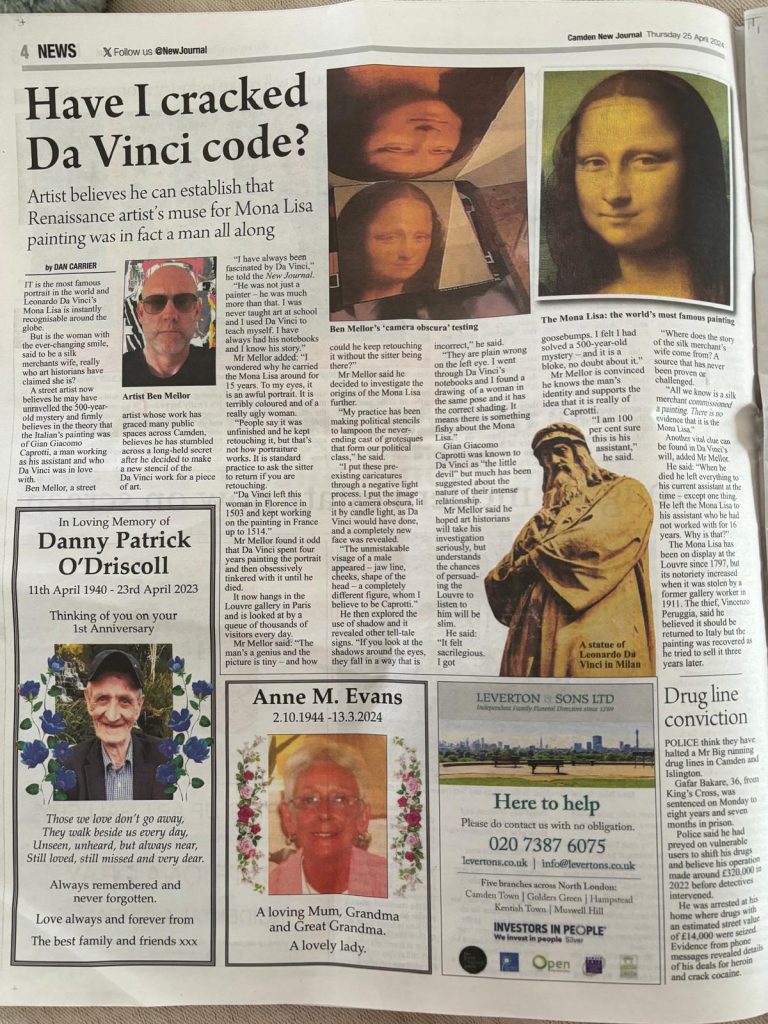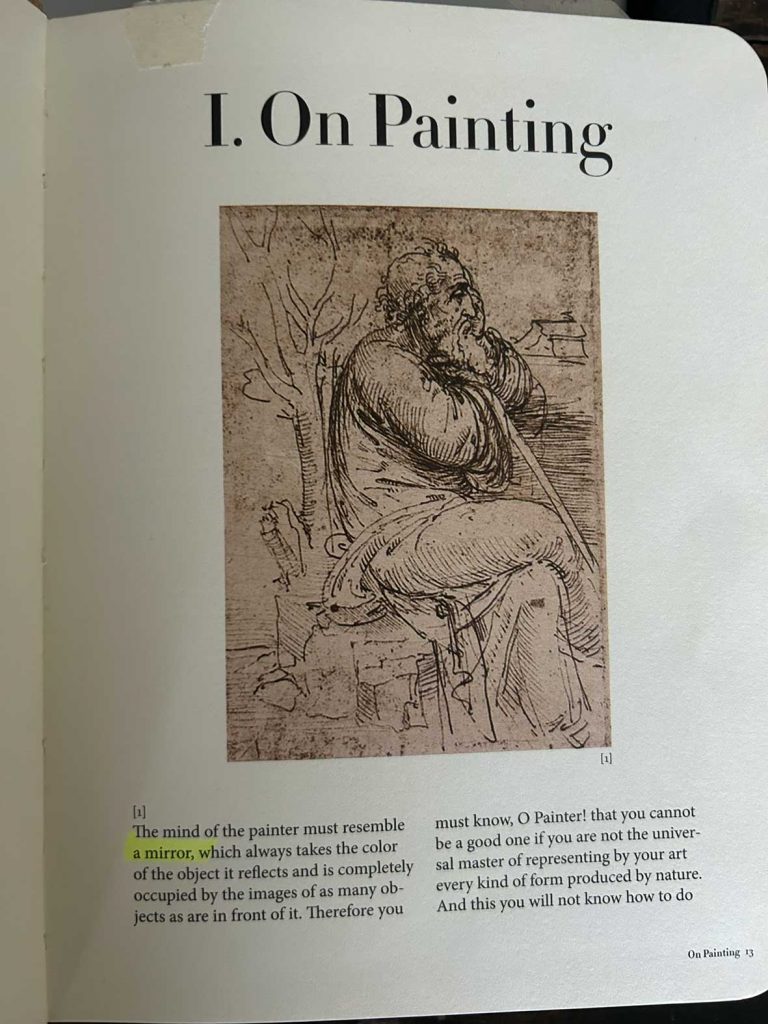
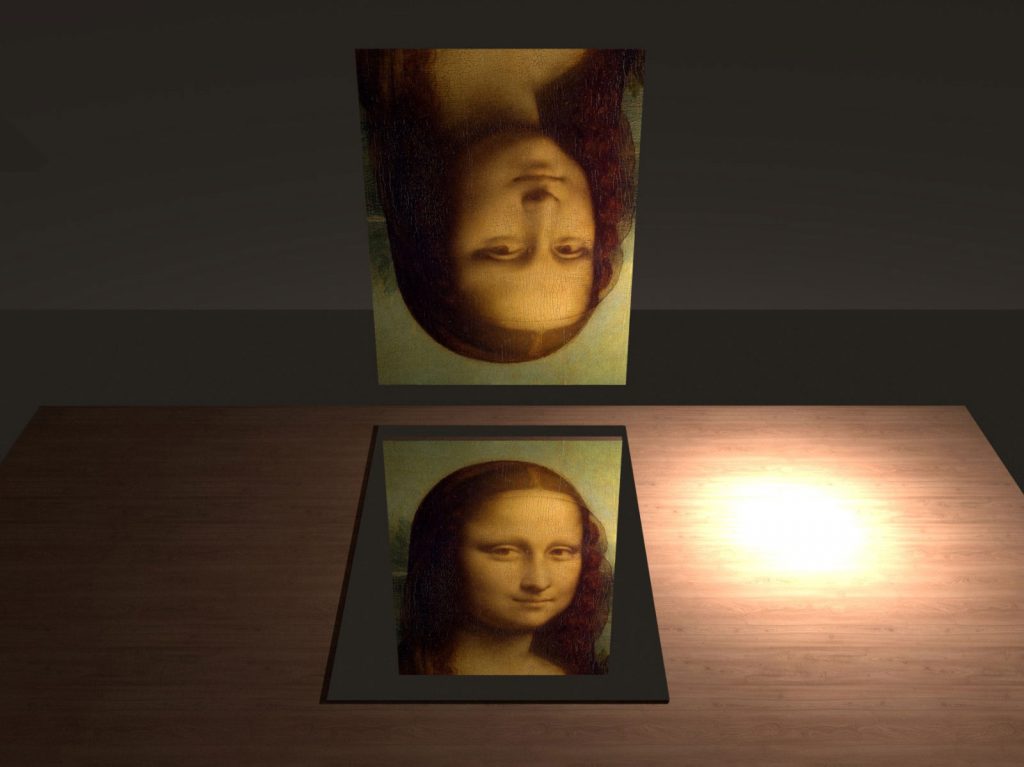
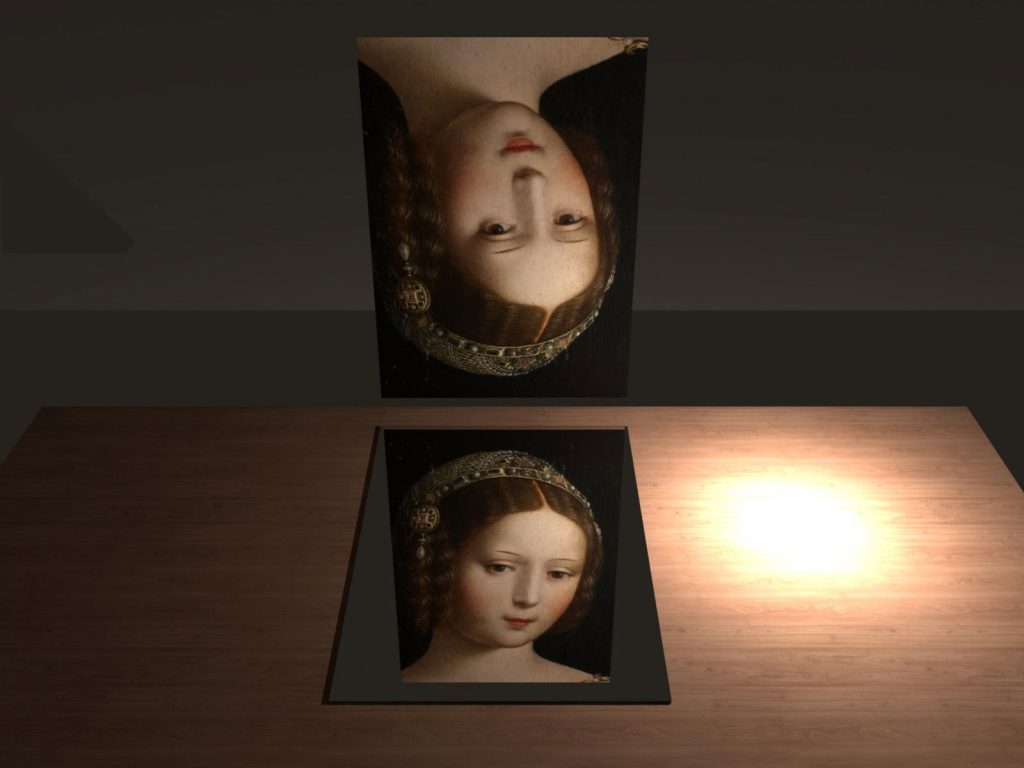
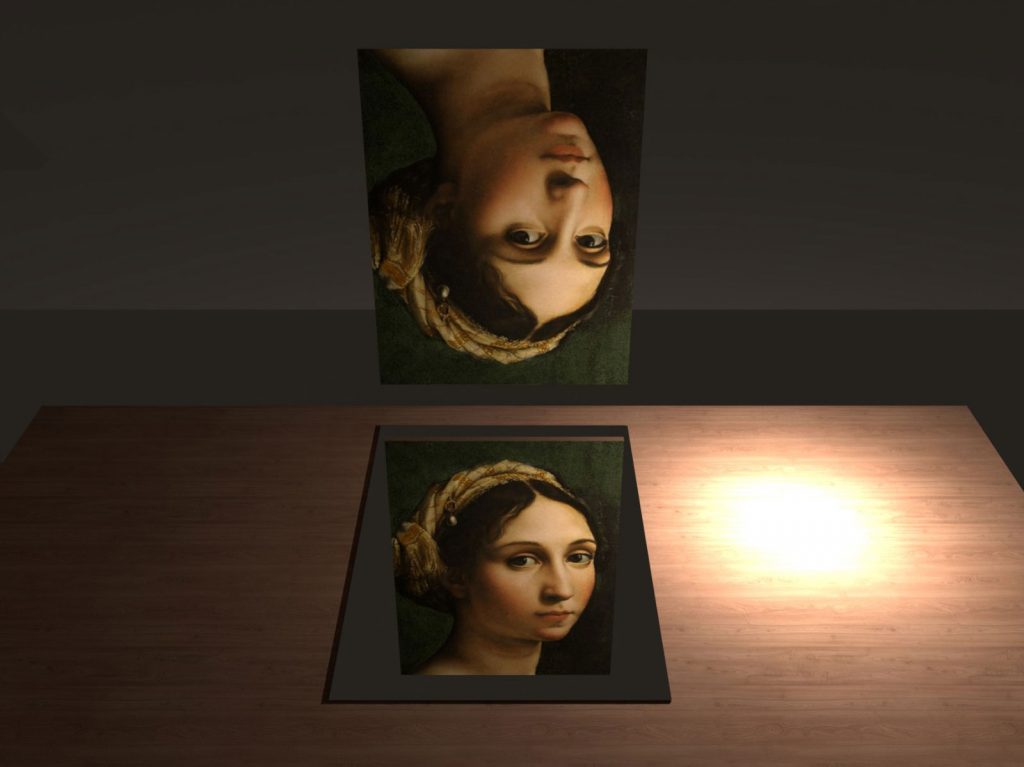
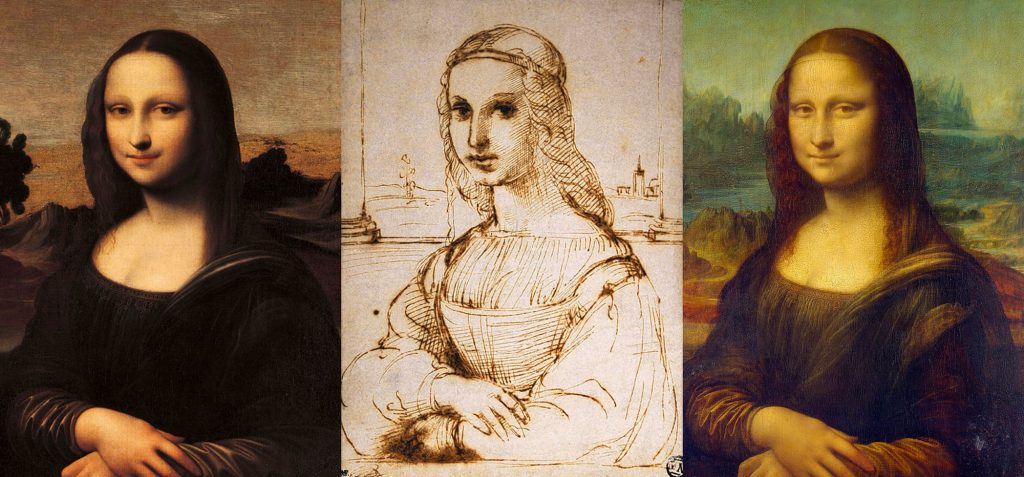
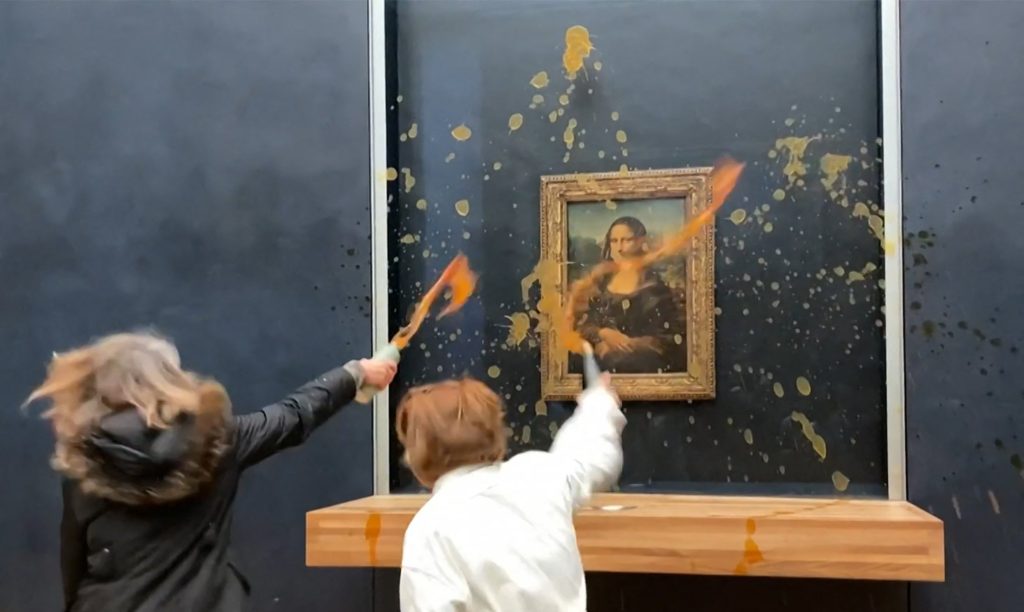
On a conveniently dark and stormy morning I want to tell you a story in two timelines with hopefully the same conclusion. It begins for me on January 28 th of this year and supporters of Just Stop Oil throwing soup over the Mona Lisa in the Louvre in Paris. As an artist who loves to play with images I realised that despite my lifelong fascination with Leonardo I had neither used nor referenced any of his work previously. However, the perfect opportunity had come this Sunday afternoon so I downloaded the Mona Lisa. Fig 2
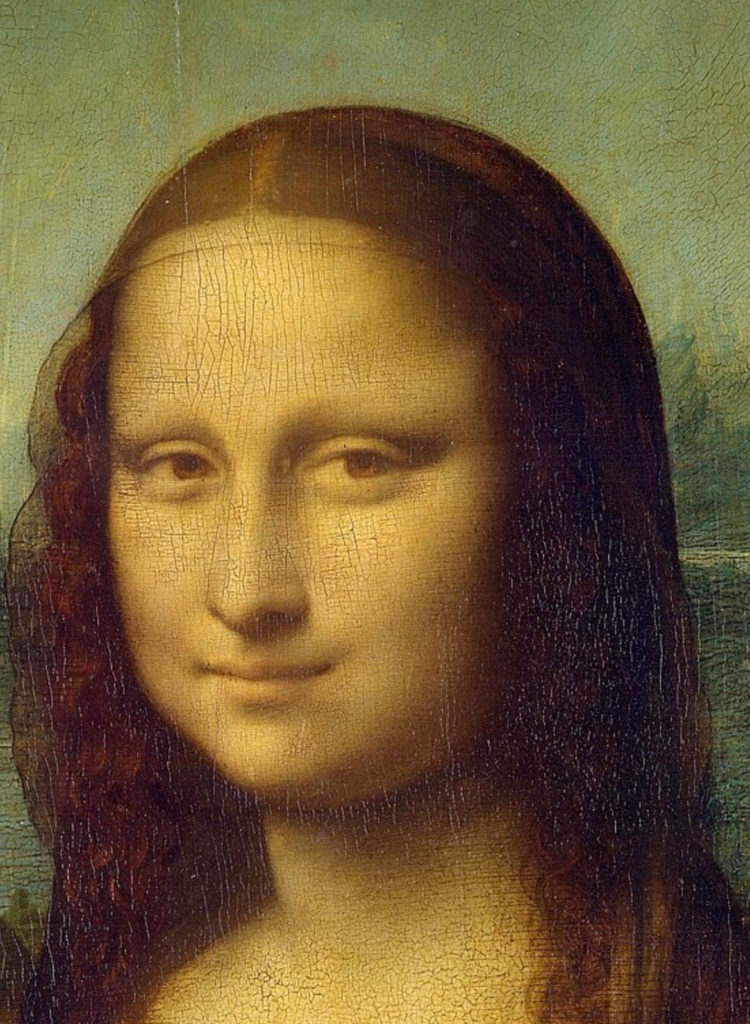
What was immediately apparent to me was that the proportions of her face weren’t right to my eyes.
Part of my art practice has been making political street art stencils a la Banksy to lampoon the grotesques of our political class. I put them through a negative light process so that my final stencils are easily distinguishable from others. When I did this to Mona Lisa the unmistakeable visage of a male appeared. Fig 3
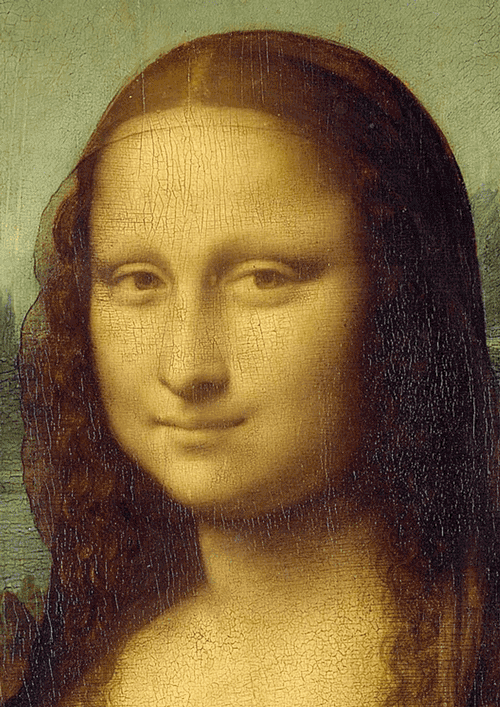
When I put a similar portrait of a lady through the same process it is also unmistakeable.
This time clearly the same lady. Fig 4
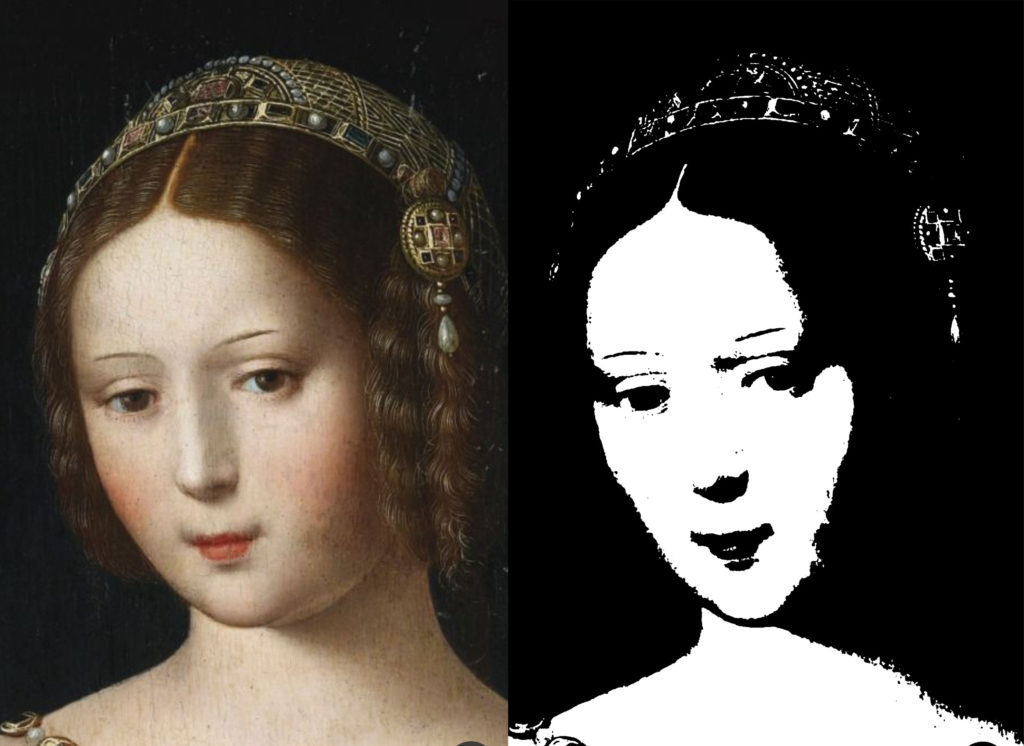
I had always wondered why Leonardo had carted around such an unremarkable painting of a rather unattractive sitter from 1505 to 1519 and his death. Supposedly taking 4 years to paint most of it and then constantly retouching it after that. I mean come on, an artist that good, nope, never made any sense at all. And how could he keep retouching it after the event. It’s a portrait and photographs hadn’t been invented for another 360 years or so! So how could he retouch it if he didn’t know what had changed?
I got his book down and re-learnt that his studio assistant at the time was called Giacomo Caprotti or Salai who was known to have been the model for many sketches and some paintings. It is also widely rumoured that they were lovers and on further investigation I found that in 1476 when Leonardo was a young man he was arrested for lewd acts and put on trial facing execution. The charges were dropped but clearly left a lasting terror. When Leonardo left Lombardy, he took with him his new assistant, Francesco Melzi, and the Mona Lisa. He then travelled Italy from commission to commission before completing his adventures and settling in France until his death in 1519.
Upon his death Francesco Melzi was the executor of the will and was bequeathed his possessions. Except the Mona Lisa which was specifically bequeathed to Salai. And on this cliff hanger, I am now, hopefully, going to provide proof to my theory.
So I set my workbench up to mimic the optic effects of a camera obscura, turned the head of the Mona upside down and placed a mirror at 90º. Placed a candle opposite to recreate the lighting conditions he would have used and the following video is the result.
Fig 8 (1-10)
Fig 11 First stage of authentication process
